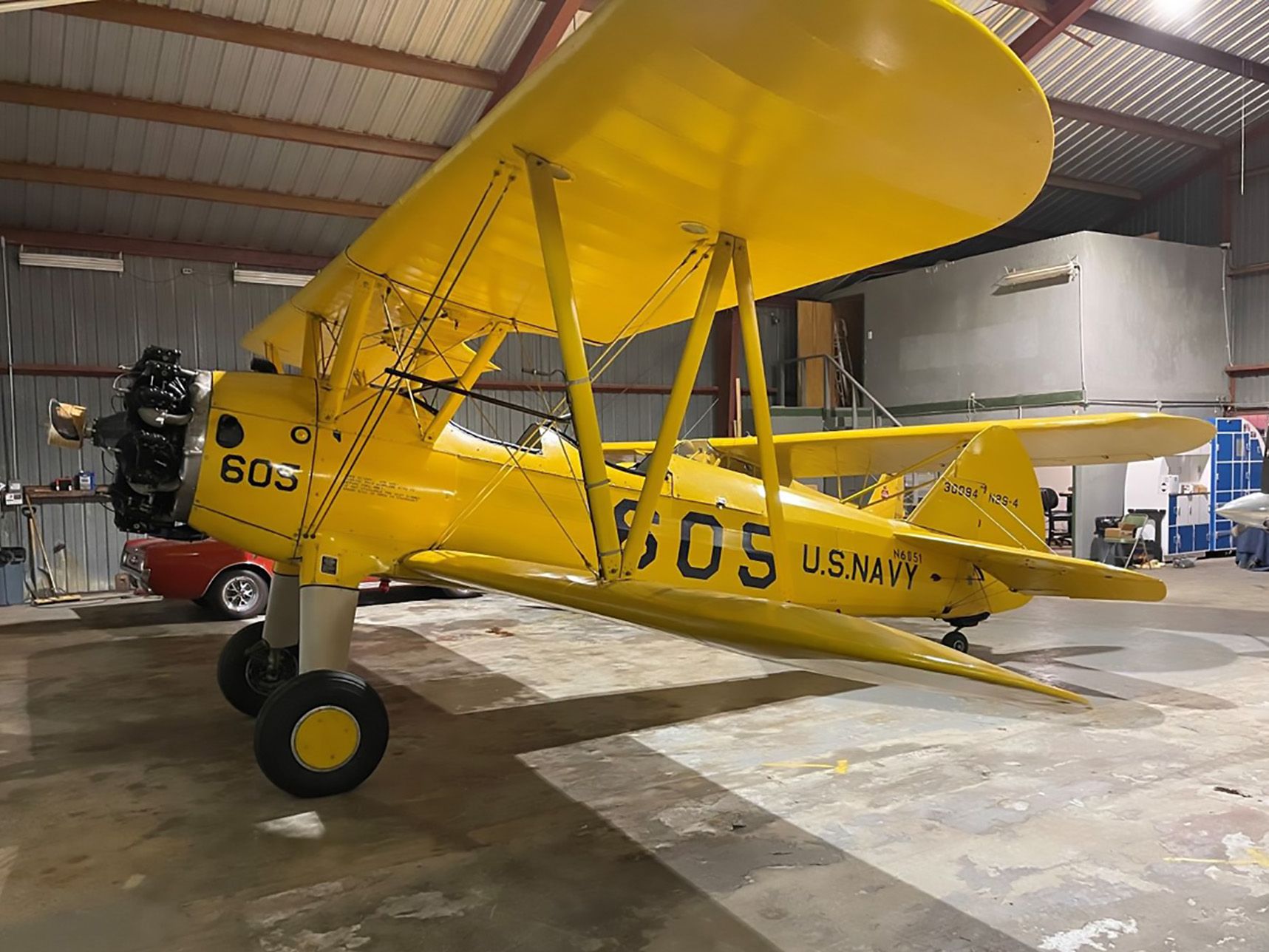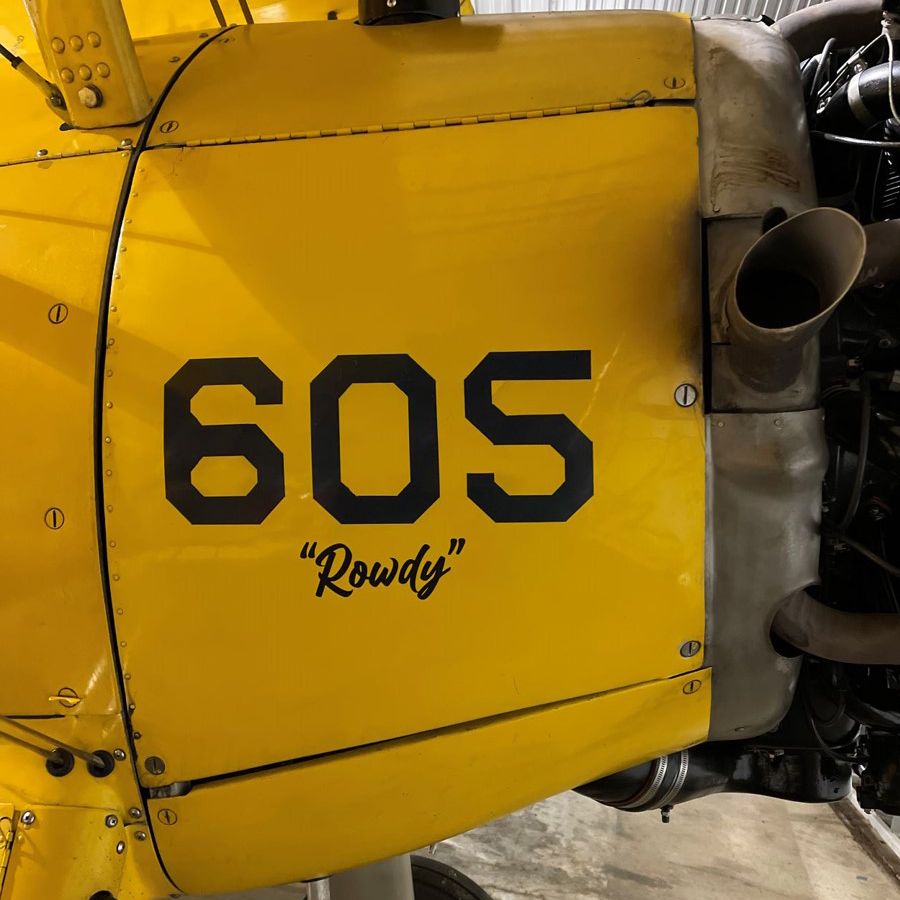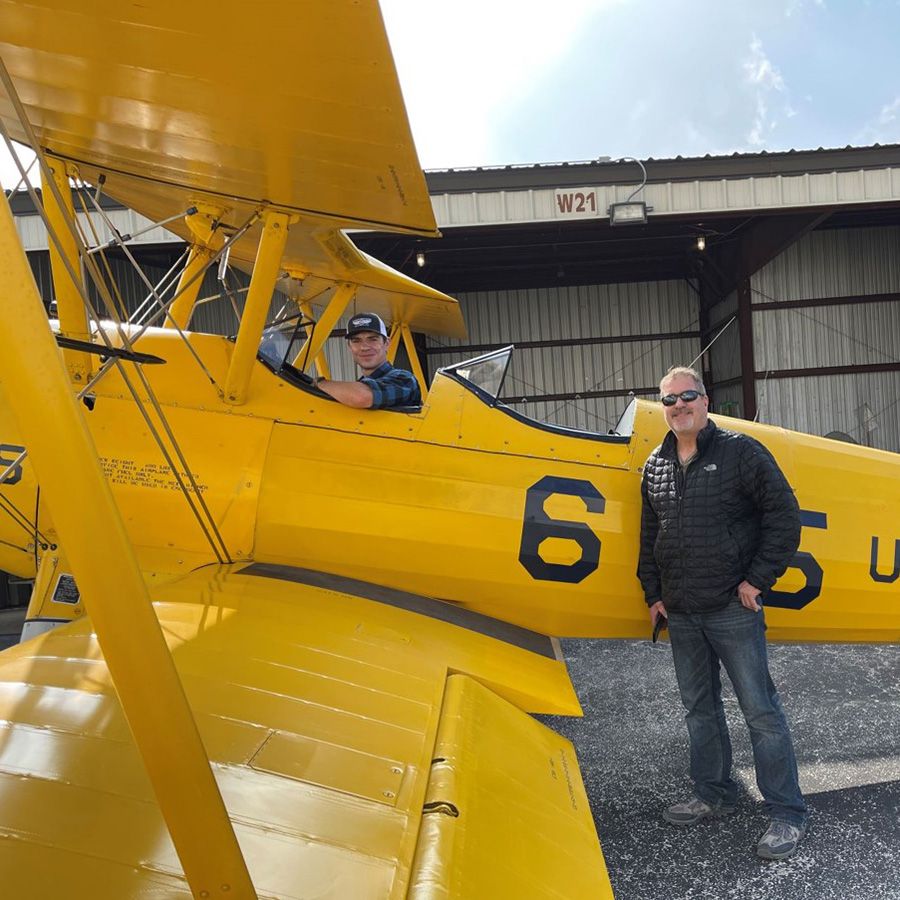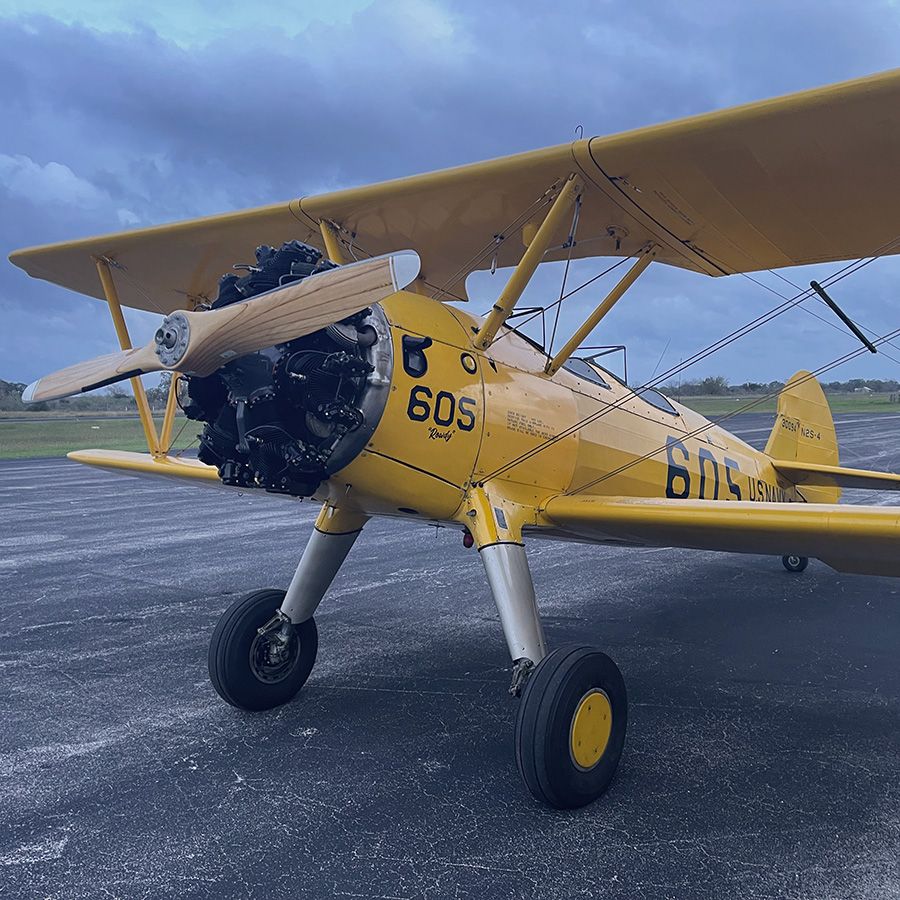1943 Stearman

Meet “Rowdy,” our 1943 Stearman N2S-4. Initially serving with the US Navy at NAS Dallas from 1943 to 1945 as a primary trainer, it was then sold as War surplus to the State of New York. The state converted it to a crop duster to spray forests for Gypsy Moth control. It remained a crop duster until 1983, where it was sold and restored to original configuration. Rowdy has passed through several hands since, and will be a major contributor to our training fleet going forward.
Stearmans are special. If put into literary terms, the word caesura describes the spot they thrive in perfectly—a pause where one phrase ends and another begins. With a Stearman, however, it’s during these “aviation caesuras” that the airplane redefines its role, completely disregarding the axiom that the wheel can’t be reinvented. It’s the one tool that seems to work on everything, never to be outdated or unneeded. Settle in and let me explain…it’s sort of a long story.
The Stearman Story begins way back in the late 1920s, when a man named Lloyd Stearman began designing the first of a series that would bear his name. By all accounts, Lloyd was an extremely talented man when it came to aircraft design. By the late 1930s, it was pretty apparent to the US government that we were going to need to train pilots, lots of them. War was spreading in Europe, and tensions were high worldwide. Our nation needed a training airplane that was easy to learn in but tough to fly. These young pilots would be called upon to fly tremendously powerful fighters and bombers, but they needed to start at square one. Enter Lloyd Stearman. He designed an airplane so simple and tough it could be used by students who had never driven a car. Our country was very rural in the 40s, and just coming out af a depression to boot. Built like a bridge truss, the PT-17 could take a beating, and was simple to repair. Airborne, in the hands of a student, it was forgiving, but with a master…divine. Lloyd was a designer, not a businessman. He had sold his company, and the design, to Boeing a few years earlier. During WWII, the US trained over 80,000 pilots. Virtually all of them at one point flew a Stearman. Boeing produced almost 9000 copies. When the War ended—its job done—it would seem to be the end of the line for the Stearman PT-17. Not so.
Caesura #1, Role 2
Post-war America was booming. Modern industrialization from the war was available, and wartime factories switched into peacetime production. Many Americans moved from the farms to the cities to work. The population began to grow, and grow, and grow. Outdated farming methods began to change, with productivity rising accordingly. The crops needed fertilizer and pesticides. Application of these by air was important, and the abundance of wartime surplus Stearmans—an airplane that could take a beating and lift a heavy load—fit together like a hand in a glove. After the war, thousands of Stearmans were converted to crop dusters, and their role quietly switched to feeding the nation they were designed to protect. This role would last well into the 1980s, when more modern aircraft designed specifically for Agricultural operations began to gradually replace the 50-year-old airplanes. The transition is almost complete, although even today there are a few Stearman crop dusters still working.
Ceasura #2, Role 3 The “Post crop dusting but ‘too cool’ of an airplane to just throw away” phase
What do you do with a few thousand big biplanes, lots of war surplus parts, and a booming general aviation community? Well, rebuilding them back into civilian airplanes and airshow performers is phase #3 of the Stearman lifecycle. Throughout the 80s to present, Stearmans have become prized posessions of collectors, aviation buffs and airshow performers. Stunt pilots and wingwalkers have thrilled crowds at airshows for decades as the performance, noise and smoke roar to the fans that a Stearman will never die. The interest in the antiques seems to be waning among “modern” pilots, as the primary focus seems to be electronics and efficiency. But wait, there’s more! A Stearman has more to give…
Caesura #3, Role 4…Coming full circle
Here at the museum, we are blessed with a variety of volunteers, some of whom are pilots. We have civilian and military, airline, corporate and general-aviation folks. Most of us are older and have seen a thing or two, and there’s one thing we all agree on. Stick-and-rudder skills are diminishing as training emphasis shifts to electronic or automation dependancy. Don’t get me wrong—moving maps, autopilots, and electronics are great, but what happens when the electronics fail and the magic quits? A pilot needs to know how to grab the bull by the horns and fly the airplane, period. Stall/spin accidents continue to be the leading cause of death in general-aviation accidents, yet the requirement to train them was dropped from the training requirements years ago. Why not teach them? We can, and we will. There’s nothing better than Cub and a Stearman to teach a student basic stick-and-rudder skills. The Stearman was created with that in mind—to develop skills that train a pilot to perform in extremely demanding situations. Skills that won a war. It’s Stearman DNA.
Our Stearman, “Rowdy,” has faithfully performed every role that a Stearman has had. He’s ready and willing to return to his roots and teach a new generation. Join us for one of our future stick-and-rudder workshops. You’ll be forever changed, I promise.


